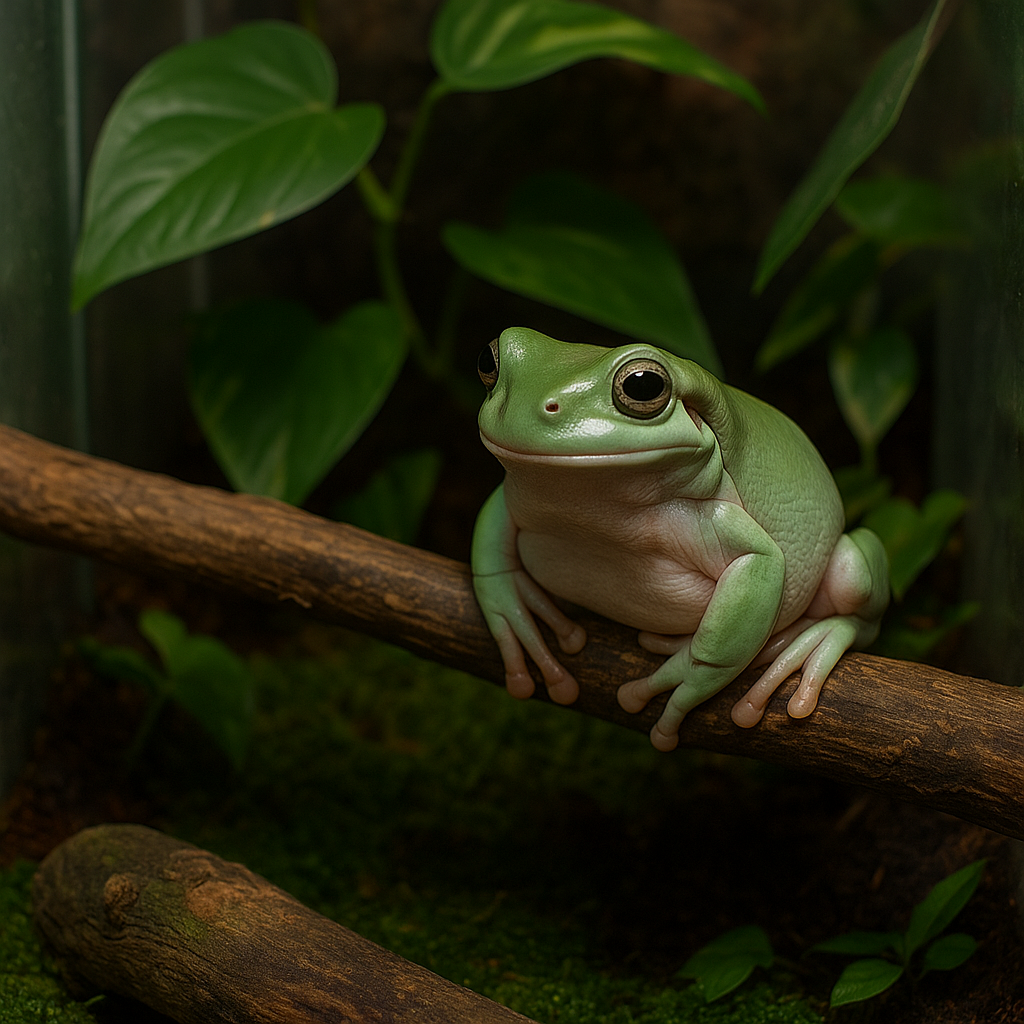Finding a clutch of eggs in your vivarium is an exciting moment. But when those jelly-like blobs never turn into tadpoles — or worse, turn cloudy, rot, or vanish — the disappointment is real. If this keeps happening, it’s time to troubleshoot.
In this guide, we’ll dive deep into why dart frog eggs often fail to hatch, especially in UK frog rooms where ambient humidity and temperature can be unpredictable. We’ll also cover how to spot healthy eggs, rescue clutches at risk, and set up a reliable egg rearing system.
“`🔍 What Should Happen: The Normal Egg-to-Tadpole Timeline
- Day 0–1: Eggs are laid in a moist, protected spot (leaf axil, film can, or horizontal surface)
- Day 1–3: Fertilised eggs begin to show a central dark dot; the jelly remains clear and plump
- Day 3–7: Embryo forms visibly inside the egg; tail growth begins
- Day 10–15: Tadpoles begin wiggling inside the egg
- Day 14–20: Eggs rupture or are transported (depending on species); tadpoles are fully aquatic
❌ Common Reasons Dart Frog Eggs Fail
1. Infertility or Incomplete Fertilisation
This is the most common reason a clutch never develops. The eggs remain clear or white, sometimes shrinking after a few days. Why?
- Young or inexperienced males may not fertilise properly
- The pair may not be properly bonded or synchronised
- The male was not present or didn’t find the eggs in time
What you can do: Give the pair time to practise. Often it takes 2–5 clutches before things work. Watch for calling and courtship, and consider pairing with a proven male.
2. Temperature and Humidity Swings
Dart frog eggs are incredibly sensitive to dehydration or sudden cooling — both common in UK homes. Central heating turning off at night? You might see your humidity drop 20–30% within hours.
- Humidity below 90% in the first 72 hours is often fatal
- Cool temperatures (below 20°C) can slow development or stall it entirely
Solutions: Use sealed deli cups or small tubs with damp sphagnum moss to keep clutches stable. Check hygrometers regularly and consider a fogger on a thermostat to stabilise humidity overnight.
3. Biological Contamination: The Silent Killer
Eggs left in the vivarium too long are at risk from microfauna — especially isopods and some springtails — as well as bacteria and mould.
- White mould or fuzz = fungal infection
- Eggs dissolving = bacterial breakdown
- Missing eggs = predation or decay
Prevent this: Pull clutches within 12 hours of being laid and place them in sterilised egg rearing containers. Rinse lay sites gently with RO water if you suspect contamination. Clean all containers with boiling water or F10 before use.
4. Parental Stress and Poor Conditions
Even when eggs are viable, constant stress in the tank can cause poor fertilisation, erratic laying, or neglected clutches. Loud noises, vibrations, too much light, or overcrowding all reduce breeding success.
Best practice: Use a breeder tank. Keep it dim, quiet, and bioactive. Let the frogs feel secure with leaf litter and broms — and don’t mess with them unless necessary.
5. Moisture Wicking or Drought
If eggs are laid on the wrong surface — dry wood, hot glass, or too close to ventilation — the moisture can wick away from the jelly and cause collapse.
Fix: Offer clean, pre-wetted laying surfaces like film canisters, petri dishes with sphagnum around the edge, or wide bromeliad axils. Avoid glass and exposed hardscape.
✅ What Healthy Eggs Look Like
- Clear or slightly grey jelly
- Central black dot appears by day 2–3
- Even shape, no shrinkage or cracks
- Visible tail growth around day 5–7
Use a phone torch to candle from below — you’ll often see movement by day 8!
🧪 Emergency Rescue: Saving Weak Clutches
- Remove to sterile tub with 100% RH
- Vent once daily to allow airflow
- Add a small drop of blackwater extract or rooibos tea to fight mould (not essential, but used by breeders)
📦 How to Build a Dart Frog Egg Rearing Tub
- Use a clear deli cup with lid (250ml or larger)
- Drill or melt 2–4 pinholes in the lid for airflow
- Place damp paper towel or moss in base
- Add petri dish or smooth plastic for eggs to sit on
- Keep at 22–25°C and 95–100% RH
📎 Related Frogfather Articles
- The Secret Lives of Tadpoles
- Bioactive on a Budget
- How to Build a Dart Frog Vivarium
- Bioactive Vivarium Starter Kit (Shop)



